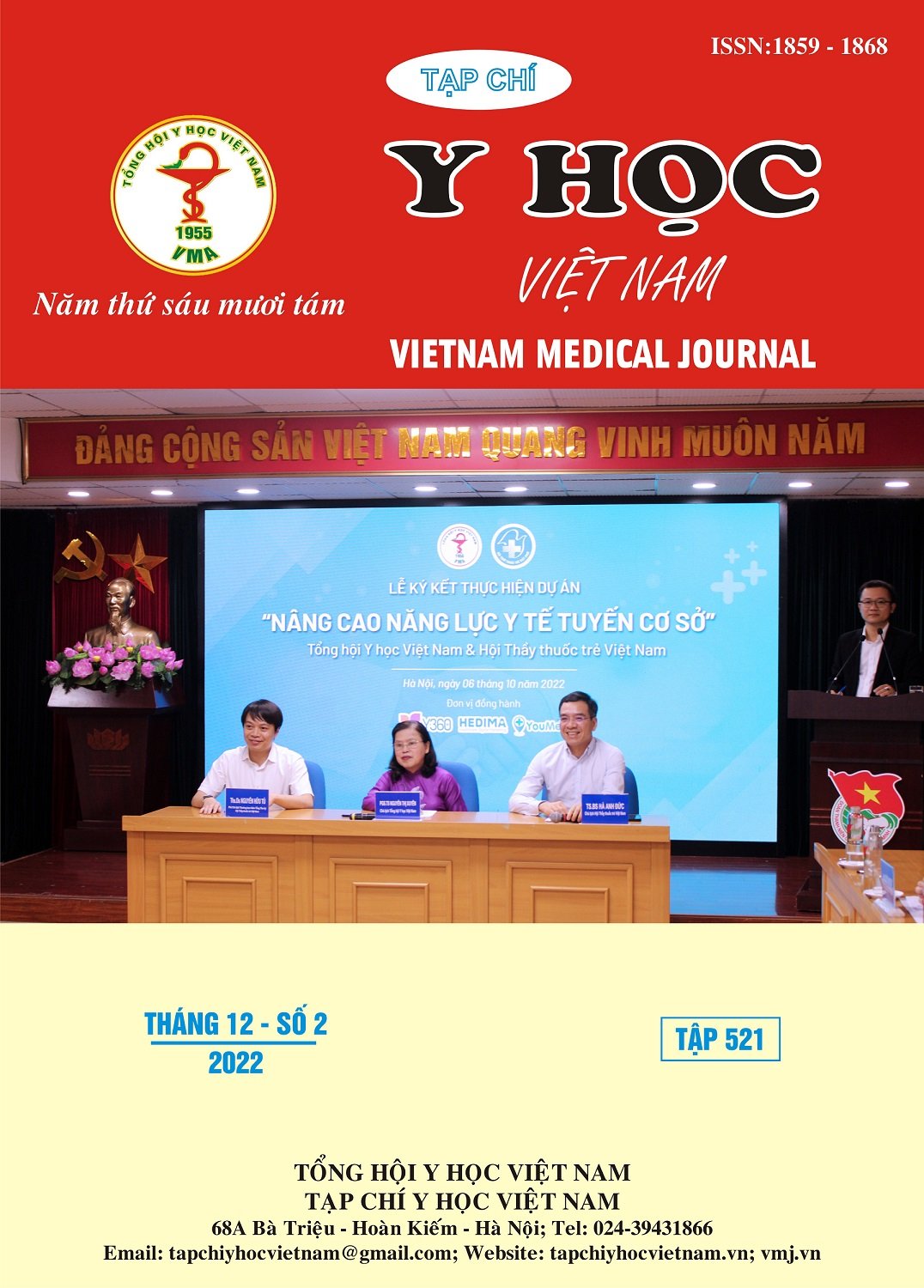RESEARCH ON CLINICAL CHARACTERISTICS AND THE CHANGE IN BLOOD BIOCHEMICAL INDICES IN PATIENTS WITH ALCOHOL WITHDRAWAL SYNDROME
Main Article Content
Abstract
Objectives: Clinical characteristics and the change in blood biochemical indices of liver function in patients with alcohol withdrawal syndrome. Subject and methods: Cross-sectional descriptive study; The ratio of clinical characteristics and biochemical indices of liver function in 31 patients with alcohol withdrawal syndrome inpatient treatment at the Department of psychiatry, 103 Military Hospital from December 2021 to August 2022. Results: Mean age: 48.81 ± 7.64; common age > 40 years old accounted for (83.87%). Average amount of alcohol per day: 478.39 ± 144.27ml and the duration of alcohol use was 15.97 ± 3.39 years. Symptoms of alcohol withdrawal syndrome: tremors (100%), insomnia (96.77%), increased automatic activity (90.32%), excessive anxiety (74.90%), delusions and hallucinations (67.74%), memory loss (100%); dysfunctional instinct (96.77%). Most of the CIWA-Ar scores were moderate to severe (77.42%). Blood glucose, liver enzymes (GOT, GPT, GGT) were elevated before treatment, especially GGT enzymes increased 10 times higher than normal values (803.19 ± 635.78 U/l), Both Billirubin total and Bilirubin direct increased before treatment and decreased to normal after treatment time. Conclusions: Patients with alcohol withdrawal syndrome were often in middle age, drinking large amounts of alcohol for a long time. The most common symptoms are tremors, insomnia, increased automatic and psychotic activities. Blood glucose, liver enzymes, and Bilirubin increased before treatment and decreased after treatment.
Article Details
Keywords
Alcohol withdrawal syndrome, clinical characteristics, blood biochemical indices of liver function.
References
2. Bùi Nguyễn Hồng Bảo Ngọc (2021). Đặc điểm lâm sàng và yếu tố tiên lượng trạng thái cai rượu ở bệnh nhân điều trị nội trú. VMJ, 507(1).
3. Narasimha V.L., Patley R., Shukla L. và cộng sự. (2019). Phenomenology and Course of Alcoholic Hallucinosis. J Dual Diagn, 15(3), 172–176.
4. Đỗ Xuân Tĩnh và cộng sự (2022). Nghiên cứu đặc điểm lâm sàng và một số chỉ số sinh hoá máu ở bệnh nhân loạn thần do rượu. VMJ, 515(1).
5. Phạm Thế Văn (2019). Đặc điểm lâm sàng và tiến triển của hội chứng cai rượu ở bệnh nhân điều trị nội trú tại viện Sức khoẻ Tâm thần. Luận văn Thạc sỹ, Đại học Y Hà Nội.
6. Đặng Thị Xuân, Đỗ Ngọc Sơn (2021). Đặc điểm lâm sàng, cận lâm sàng hội chứng cai rượu nặng điều trị tại Trung tâm Chống độc Bệnh viện Bạch Mai. Tạp chí y học Việt Nam.
7. Aleksin D.S. and Egorov A.I. (2011). Current peculiarities of alcoholic psychosis.
8. Nguyễn Văn Tuấn (2014). Nghiên cứu lâm sàng và hiệu quả điều trị suy giảm nhận thức ở bệnh nhân loạn thần do rượu.
9. Nông Thế Đoàn (2018). Đánh giá hiệu quả lâm sàng phác đồ phối hợp diazepam và phenobarbital trong điều trị hội chứng cai rượu. Tạp chí y học Việt Nam, Hà Nội.
10. Phí Thị Quang (2016). Nghiên cứu đặc điểm lâm sàng, cận lâm sàng của hội chứng cai rượu cấp ở bệnh nhân có bệnh gan mạn tính. Luận án Tiến sỹ Y học, Trường đại học Y Hà Nội.


